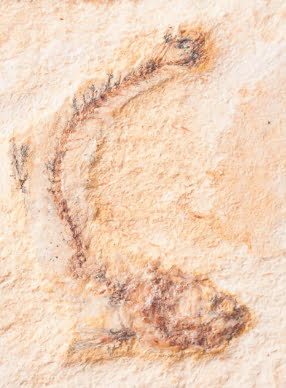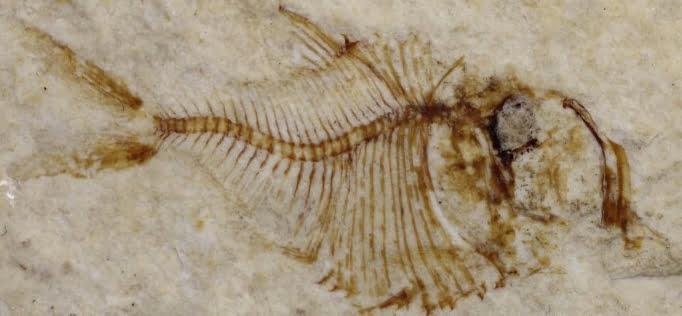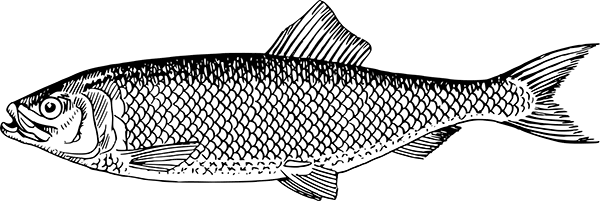On the fossil origins of herring in the Sea of Tethys, on the geographical spread of the Clupeidae and, in particular, our hero Clupea harengus
A IS FOR A BEGINNING
Earth was formed out of planetesimal dust and debris, roughly 4,600 million years ago. Its oceans began to form 800 million years later from the condensation of atmospheric water.
Sea-girt landmasses moved on the planet’s tectonic plates, eventually coming together 1,100 million years ago, to create Rodinia, the first of the planet’s supercontinents. With a name was taken more-or-less 1,100 million years later from the Russian for homeland, it lasted 400 or so million years.
In the period between Rodinia’s break-up and the formation, 375 million years ago, of Pangaea (All Earth), the planet’s second supercontinent, the first fish appeared in the world ocean, Panthalassa (All Sea).
Centred on the Equator when it in turn coalesced, Pangaea had an inner ocean, embraced on its eastern seaboard by the encircling peninsulas and archipelagos of what later became Indo-China. This was the Sea of Tethys.
Tethys, My Tethys
To be precise, this Tethys was the Paleo or Old Tethys Sea, the existence of which wasn’t recognised until the 1980s, because most of its traces had been obliterated by a second manifestation of the Sea of Tethys. It was Tethys II which had been originally identified and named after the sister and consort of the Greek god Oceanus in 1893 by the Austrian geologist, Edward Suess.
Tethys II started off as a small ocean in the southern hemisphere, stretching between Australia and the islands of Turkey, Iran and Tibet, right at the bottom of Tethys I. From this position just over 250 million years ago, it expanded northwards as its predecessor was tectonically swallowed up in what is known as the Tethyan Trench.
180 million years ago, with Tethys II now centred on the Equator, a continental rift opened up between the eastern seaboard of North America and North West Africa, creating the Central Atlantic. It extended the line of the Tethyan Trench and separated Pangaea into the landmasses of Laurasia (North America, Europe and Asia) and Gondwanaland (South America, Africa, India, Australia and Antarctica). It was in this Neo or Younger Tethys Sea, roughly 110 million years ago that we find the first of the proto-herrings.

The Coastlines Of The World
Proto-herrings seems to have been quite small, but they survived the Cenomanian-Turonian anoxic extinction event (91.5 mya), which saw the disappearance of 27% of marine invertebrates. Maybe it was the bones. No one would ever mistake a herring for an invertebrate. Moving forward at least 35 million years we find Knightia – the State Fossil of Wyoming – a freshwater herring. So they seem to have been euryhaline (tolerant of a range of salinity) from fairly early on. And Knightia also shoaled.
Anyway, from proto-herrings, today’s herrings, sprats, sardines or pilchards, shads and more emerged, an adaptable family of fish known as the Clupeidae. Between its different species, sub-species and varieties, it has managed to colonise most of the world’s oceans.
Predominantly fish of the continental shelves, the fact that the Sea of Tethys and the Tethyan Rift opened up to form so many of the world’s coastlines contributed to this achievement. The clupeids’ adaptability, however, has taken them further. Saltwater and marine in evolutionary origin, various species and subspecies have developed to accommodate low saline and freshwater conditions and colonised a significant number of the world’s river systems and lakes.
The ancestral herring swam in tropical waters and by far the greatest numbers of Clupeidae species are found today in similarly warm seas. But some colonised temperate and cold habitats, particularly in the North.

Cool Waters
The world’s climate cooled in the Miocene (23 to 5 million years ago) and, along with various members of the cod family, boreal or northern herrings that had colonised the Polar and the adjacent Scandian basins moved down into the northern part of the Atlantic. Herrings are adaptable but even the most cold-loving have cold shouldered the post-Miocene temperatures of the High Arctic.
The smaller number of temperate and cold water herring species provdes the prime ecological reason for their huge populations and consequent economic importance.
The origins of the herring known as the King of Fishes, Atlantic herring, Clupea harengus – the subject of this encyclopaedia – was among these boreal herrings.
A triumphant product of its own adaptability, it is found from North Carolina’s Cape Hatteras to Canada’s Davis Straits, on Greenland’s western and eastern shores and on Iceland’s northern and southern coasts. On the continental shelf of Europe it spreads from Russia to the Bay of Biscay. It reaches its highest latitudes, here, on the western coastline of Spitzbergen (78ºN), but also takes in Novaya Zemlaya, the White Sea, the Kara Sea and the Barents Sea as far as 52ºE.
Commercially, its southern reach extends to Massachussetts’ Cape Cod and Port Navalho in Brittany. It is found in the Western Baltic, but in the Eastern Baltic and the Gulfs of Bothnia and Finland, it has adapted to the decreasing salinity in the form of the small and delectable subspecies, Clupea harengus n membras, the Baltic herring.
Meanwhile, freshwater herrings are found in a Swedish lake north of the Virboa River estuary and in a number of Finnish lakes on the Turku archipelago. In North America, they’re is found in the Great Lakes – although there have been conservation concerns in Lake Huron and Lake Michigan.
North By North East
Back to Clupea harengus, when it originally moved down from the North Pole there was the land bridge across the Bering Straits, blocking access to the Pacific.
Fish moving between the North Atlantic and the Pacific have generally used the North West Passage: Siberia’s rivers create too great a freshening effect for most saltwater species. In some unspecified post-glacial period, however, Atlantic herrings made their way East through the low saline barriers, evolving into the White Sea herring (Clupea pallasii n maris albi) the Chesha-Pechora herring (Clupea pallasii n suworowi) and the Pacific herring (Clupea pallasii).
These are the origins of the herring.
Hurrah!
